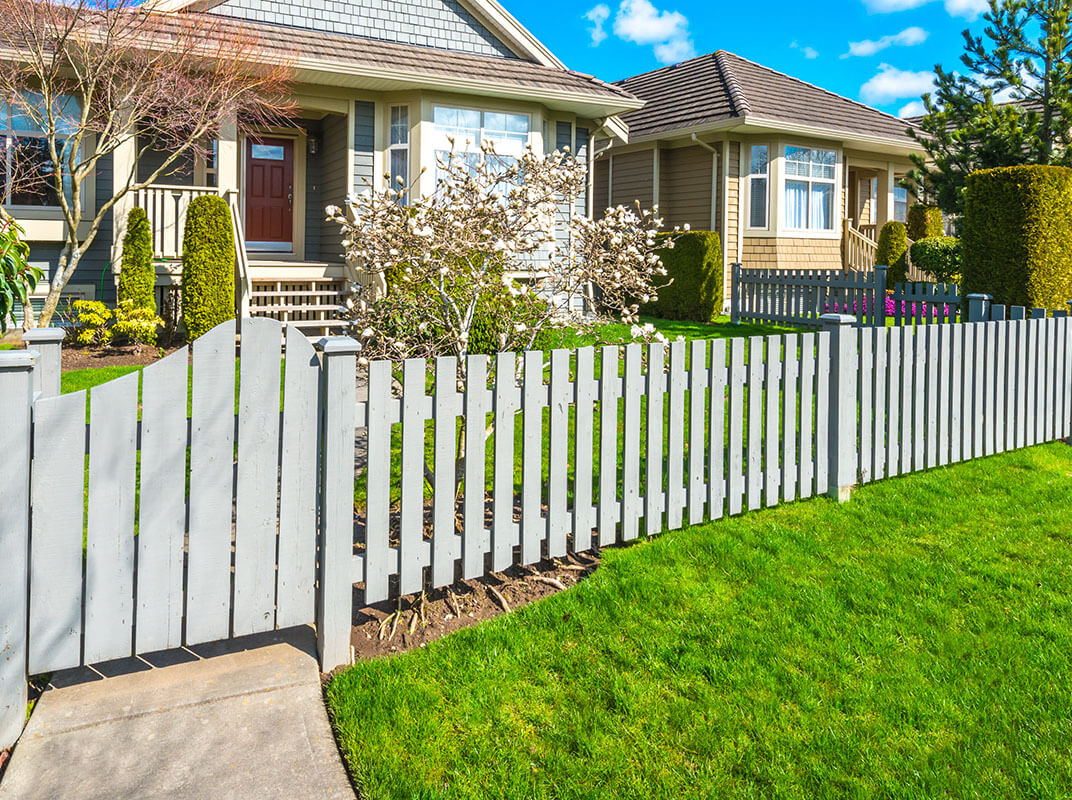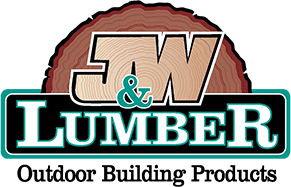
Fencing can provide a decorative appeal, create a perimeter for your property, or both. In terms of what materials are best to use, homeowners typically find themselves deciding between wood and vinyl.
Though both offer unique advantages, the differences between the two will help you decide which is the best option for your outdoor renovation.
Wood Fencing
Homeowners love the warmth and natural beauty a wood fence adds to the yard. It’s also a more long-lasting and customizable option than vinyl, though it requires periodic restaining, repainting, and/or board replacement.
There are several board types and placement options, such as a dog-eared picket fence, which follows the same structure as a classic picket fence but with slightly rounded board tops. Or, horizontal fencing which allows you to play with different patterns by alternating board size and gap space.
However, as beautiful as it is, wood fencing requires more maintenance than vinyl, which can be a deciding factor when narrowing down your options.
Vinyl Fencing
Alternatively, Active Yards vinyl fencing is a solid, neutral option that can add contrast to a colorful yard. It’s available at J&W Lumber in tan and white, though other colors including wood grain style vinyl can be special-ordered as needed, and comes with a lifetime warranty.
Active Yards vinyl fencing delivers a clean, polished look and requires almost no maintenance. It’s also easy to install and offers a modern appeal. Build a larger vinyl ranch rail as a cost-effective way to distinguish a property line or a smaller access gate to add privacy in a decorative way.
Secure Your Fencing for Long-Lasting Success
Whether you choose vinyl or wood, there are a few tips to secure fencing so it’ll maintain its integrity and aesthetic appeal. Using the right materials in the beginning can help preserve it for the long run.
Reinforce with steel posts
To strengthen the hold of wood fencing, PostMasters provide durability that can endure harsh weather elements without warping or rotting. These heavily galvanized steel posts are available in multiple lengths and guaranteed with a 15-year warranty.
Choose screws over nails
Nails on a fence don’t last as long as screws. When the weather changes and there’s more moisture in the air, wood fencing will swell and dry. As that happens, nails could pop out.
Always use screws and oil-based stains for wood fencing. Opt for exterior-coated screws to avoid bleeding, or the discoloration that can occur around fasteners.
Fill post holes with concrete
To set fencing posts, fill each hole with concrete before tapping the post into place. Then, slope the concrete away from the post to prevent water from pooling around it.
Overall, consider the installation process, in addition to the aesthetic, maintenance, and design options you want when choosing between vinyl vs. wood fencing.
Our knowledgeable and friendly representatives will work with you or your contractor to secure the right type and size of boards, as well as any other building materials needed to get the job done.
